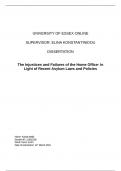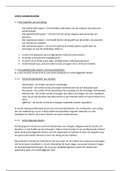Thesis
The injustices and failures of the homeoffice-in light of recent asylum and immigration laws
- Module
- Thesis
- Institution
- The University Of Essex (UoE)
This dissertation provides many reasons of how the home office has failed asylum seekers and immigrants in the UK. Many old and new laws are discussed and how it affect the asylum seekers and the problems they face.
[Show more]




